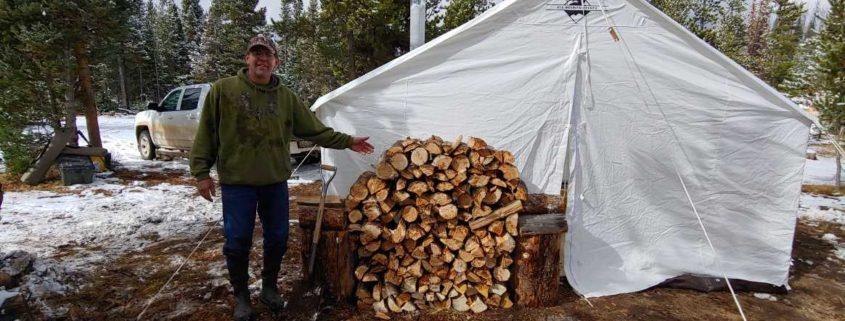Stay Warm and Cozy: How to Use a Wood-Burning Stove in Your Canvas Tent with Elk Mountain Tents
Elk Mountain Tents is a company that specializes in high-quality canvas tents with a stove that are perfect for camping in any season. Their canvas tents are designed to withstand harsh weather conditions and provide a comfortable camping experience. One of the most popular features of their canvas tents is the ability to use a wood-burning stove to keep the tent warm and cozy in colder weather. In this article, we will provide a step-by-step guide on how to use a wood-burning stove in your canvas tent.
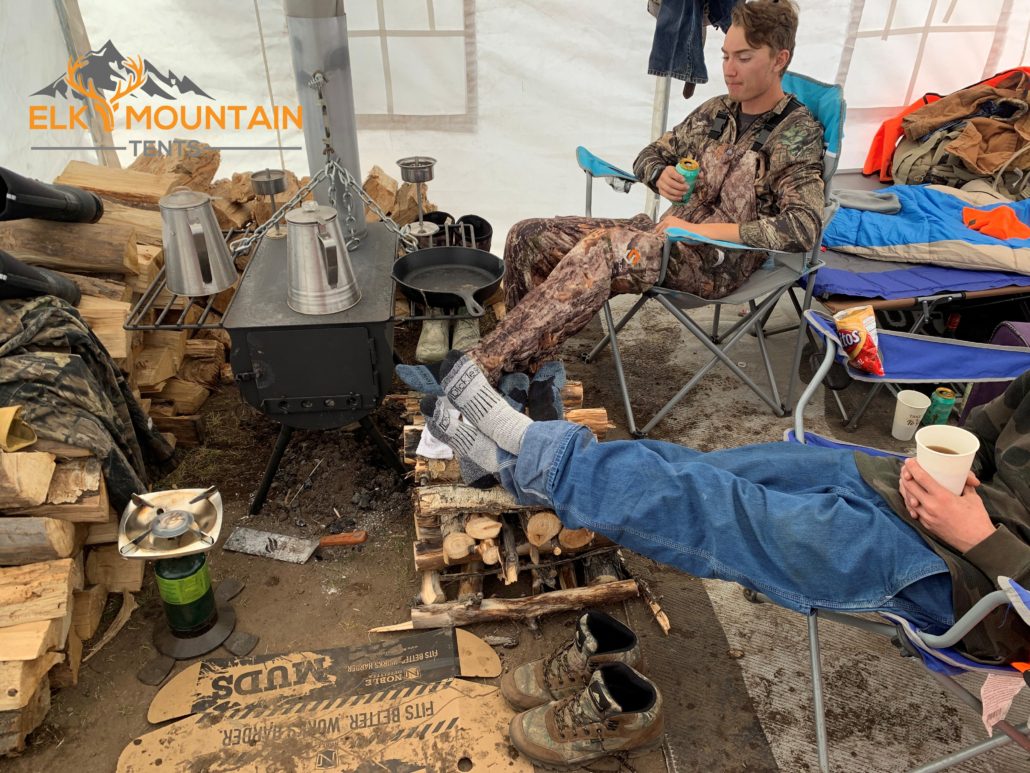
Preparing the Wood-Burning Stove and Tent
Before using a wood-burning stove in your canvas tent, it is important to properly prepare both the stove and the tent. This includes setting up the stove, checking the flue and damper, and making sure the tent is properly ventilated.
- Set up the stove
The first step is to set up the stove inside the tent. Elk Mountain Tents does not manufacture stoves but we do have our go-to favorite availalable in the online shop. It is a cylinder stove that hasn’t let us down yet. But there are plenty of great wood burning stoves out there so feel free to do a little research and find something that’s just right for you.
To set up the stove, follow these steps:
- Each Elk Mountain Tents model comes with a stove jack, so unless you install a second jack, you’ll be placing your stove at the prepared location.
- Assemble the stove according to the manufacturer’s instructions. Make sure all the parts are securely fastened.
- Place the stove on your stove matt if you have one (recommended).
- Attach the stovepipe to the stove and extend it through the stove jack on the tent. The stove jack is a small opening in the tent that is designed to allow the stovepipe to pass through. Make sure the stovepipe is securely fastened to both the stove and the tent.
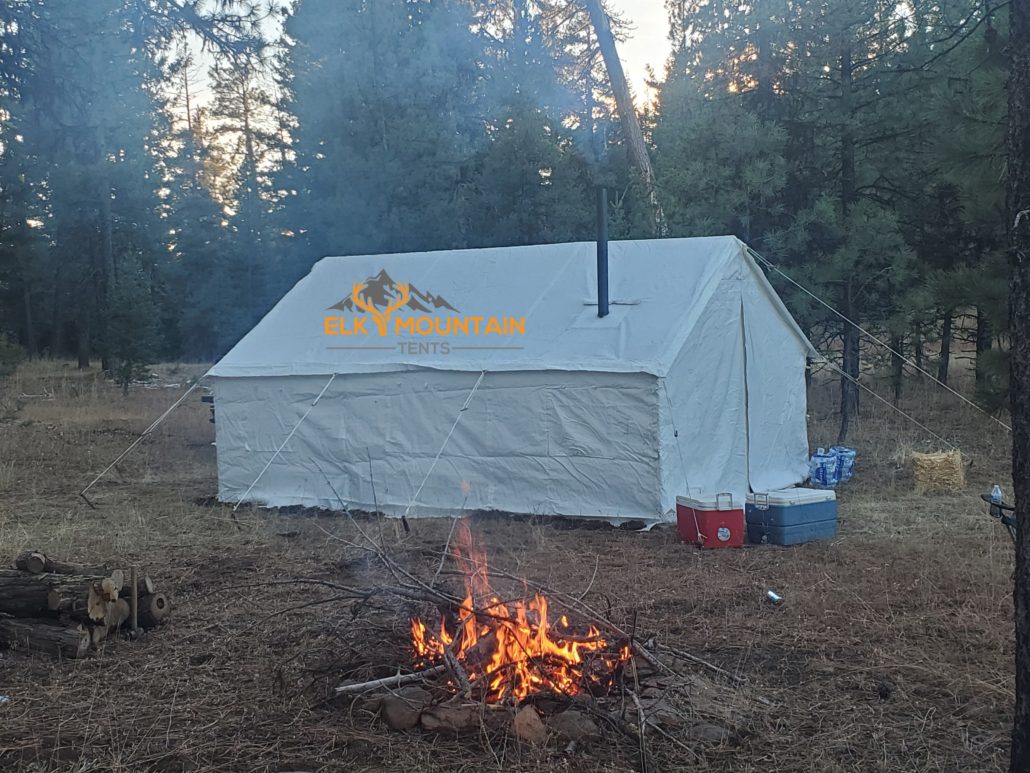
- Check the flue and damper
Once the stove is set up, it is important to check the flue and damper to ensure proper ventilation. The flue is the pipe that carries the smoke from the stove to the outside, while the damper is a small flap inside the stovepipe that controls the flow of air.
To check the flue and damper, follow these steps:
- Open the damper to allow air to flow through the stovepipe.
- Light a small fire in the stove and observe the smoke as it travels through the stovepipe.
- Check that the smoke is flowing out of the flue and not leaking into the tent. If smoke is leaking into the tent, adjust the damper or check for any leaks in the stovepipe or stove jack.
- Ventilate the tent
Finally, it is important to ensure that the tent is properly ventilated to prevent carbon monoxide buildup. Carbon monoxide is a colorless, odorless gas that can be deadly if inhaled in high concentrations. And yes, it is something that affects wood stove users and not just gas stove users. To prevent carbon monoxide buildup, make sure the tent has adequate ventilation. Fortunately, all models of Elk Mountain Tents come with screened windows. All wall tents also come with a ventilation flap at the ridge.
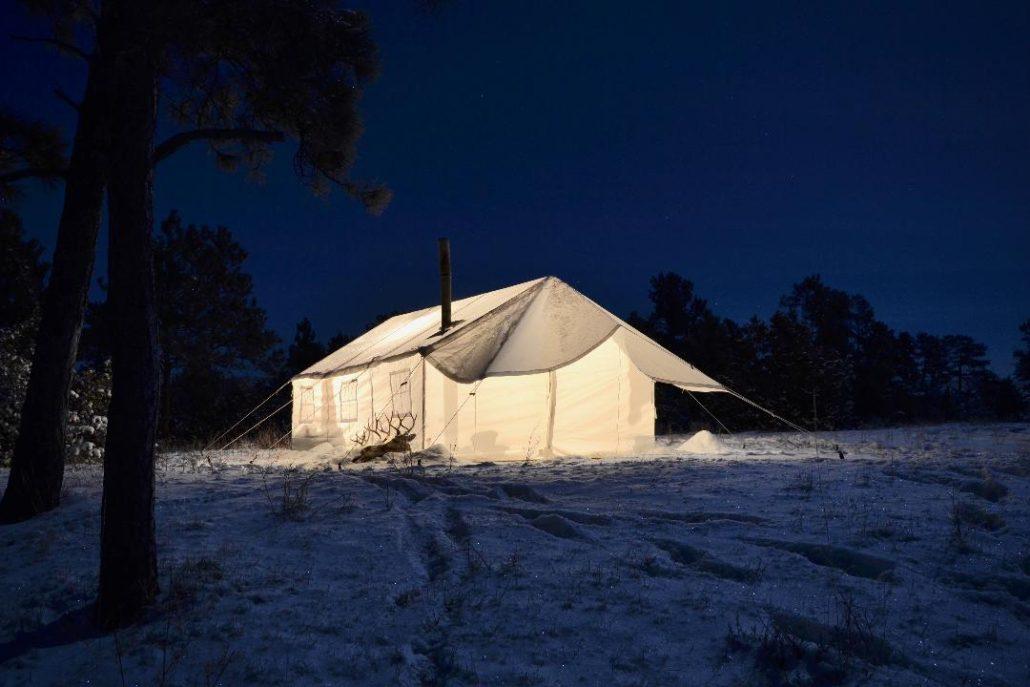
Using the Wood-Burning Stove
Once the stove and tent are properly prepared, it is time to start using the wood-burning stove. Here are some tips for using the stove safely and efficiently.
- Choose the right wood
The type of wood you use in your stove can have a big impact on its efficiency and the amount of heat it produces. It is best to use dry, seasoned hardwoods such as oak, maple, or birch. Softwoods like pine or cedar can be used, but they burn faster and produce less heat than hardwoods. Avoid using green or wet wood as it produces more smoke and creosote buildup in the stovepipe.
- Build the fire
To build a fire in the wood-burning stove, follow these steps:
- Place a small amount of kindling or paper at the bottom of the stove.
- Add small pieces of dry, seasoned wood on top of the kindling.
- Light the kindling and allow the fire to catch the wood.
- Once the fire is burning steadily, add larger pieces of wood to the stove as needed.
- Monitor the stove
It is important to monitor the stove while it is in use to ensure it is burning safely and efficiently. Here are some things to watch for:
- Check the stovepipe for any smoke or creosote buildup. Creosote is a black, tar-like substance that can build up in the stovepipe and cause a chimney fire. If you notice creosote buildup, it may be necessary to clean the stovepipe.
- Keep an eye on the damper and adjust it as needed to control the flow of air and temperature of the stove.
- Make sure there is always a small bed of hot coals in the stove to keep it burning efficiently.
- Practice fire safety
Using a wood-burning stove in your canvas tent can be a great way to stay warm and cozy in colder weather, but it is important to practice fire safety to prevent accidents. Here are some tips for staying safe:
- Never leave the stove unattended while it is in use.
- Keep flammable materials away from the stove, including clothing, bedding, and other items.
- Use a fireproof mat or barrier under the stove to protect the floor of the tent from heat and sparks.
- Keep a fire extinguisher nearby in case of an emergency.
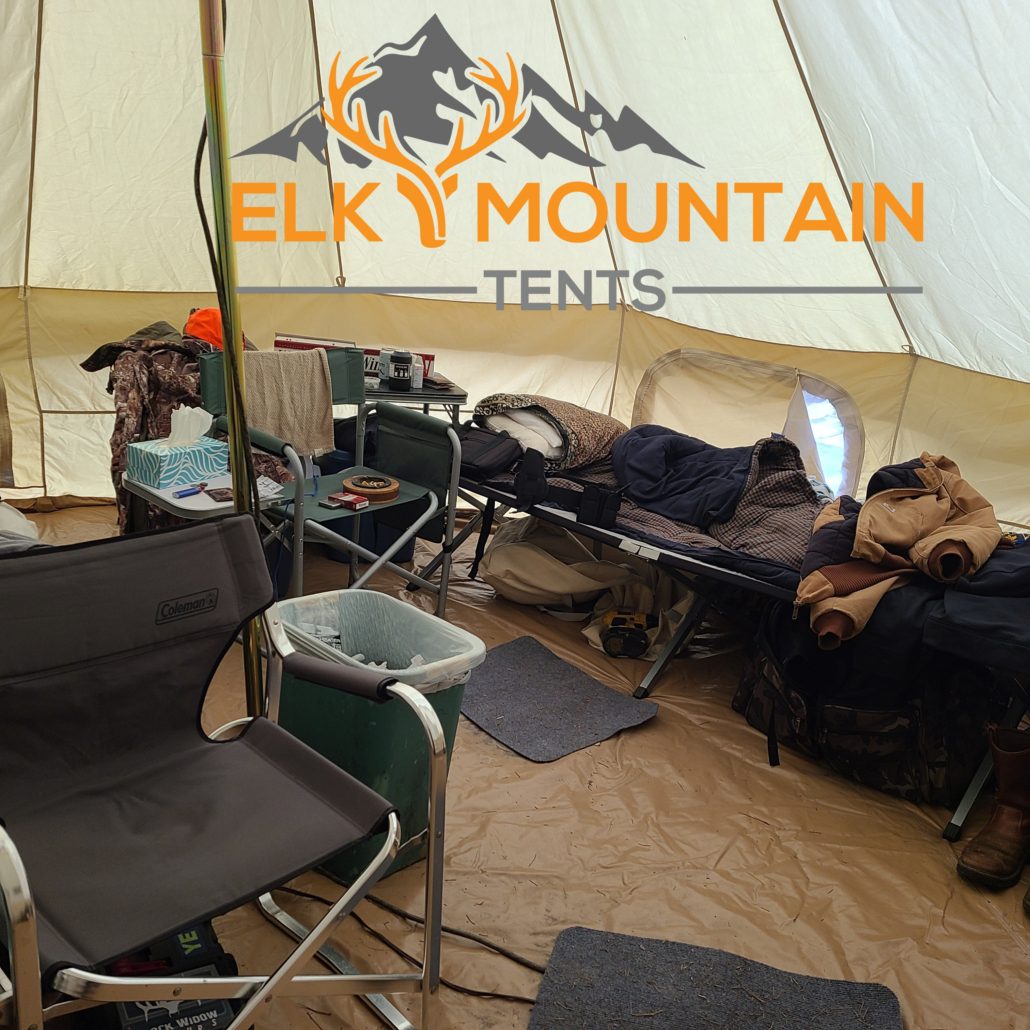
FAQs
Q: Can I use a wood-burning stove in any canvas tent?
A: Yes, but there is inherent risk any time you are using fire. Additionally, all types of canvas is flammable unless specially treated, so it is recommended that you at least use a heat shield.
Q: How much wood should I bring for a weekend camping trip?
A: The amount of wood you will need depends on a variety of factors, including the temperature outside, the size of your tent, and how often you plan to use the stove. As a general rule, plan to bring at least one bundle of firewood per day for a weekend camping trip.
Q: How do I clean the stove and stovepipe after use?
A: Allow the stove to cool completely before attempting to clean it. Once it is cool, remove any ash and debris from the stove and stovepipe using a brush or scraper. If there is any creosote buildup in the stovepipe, it may be necessary to clean it using a chimney brush.
conclusion
Using a wood-burning stove in your canvas tent can be a great way to stay warm and cozy in colder weather. However, it is important to properly prepare the stove and tent, use the stove safely and efficiently, and practice fire safety to prevent accidents. By following these guidelines, you can enjoy a comfortable camping experience in any season.

